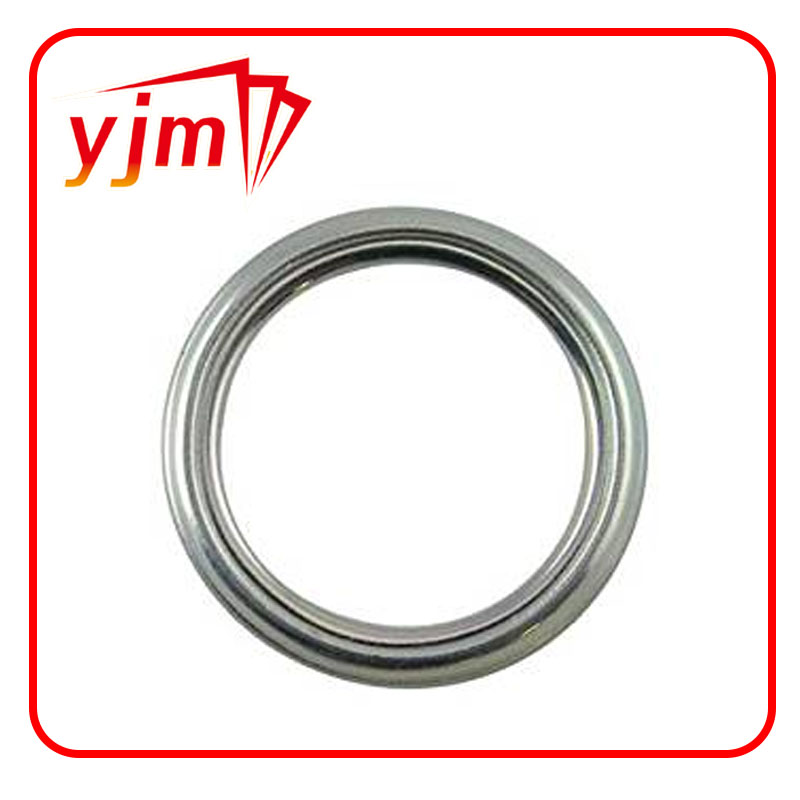Metal Bonded Seal - High Performance Sealing Solutions
Understanding Metal Bonded Seals An Overview
Metal bonded seals are essential components commonly used in various industries for ensuring leak-proof connections. Their unique design integrates metal with elastomeric materials, resulting in seals that offer exceptional performance in harsh environments. This article explores the features, applications, advantages, and considerations of metal bonded seals.
What Are Metal Bonded Seals?
Metal bonded seals consist of a durable metal ring that is bonded to an elastomer (rubber-like material), creating a reliable sealing solution. The metal component provides structural integrity and resistance to high pressures, while the elastomer ensures flexibility and adaptability to fit irregular surfaces. This combination makes them ideal for applications where conventional seals might fail due to extreme conditions.
Applications of Metal Bonded Seals
Metal bonded seals are widely used in various sectors, including
1. Aerospace In aerospace applications, these seals are critical for maintaining pressure in fuel lines and hydraulic systems. Their ability to withstand extreme temperatures and vibrations makes them indispensable for aircraft integrity.
2. Automotive In the automotive industry, metal bonded seals are used in engine components, transmission systems, and fuel systems to prevent leaks and ensure optimal performance.
3. Oil and Gas The oil and gas sector employs these seals in drilling equipment and pipelines, where high pressure and temperature are prevalent. Their robust nature ensures the safety and efficiency of operations.
Advantages of Metal Bonded Seals
metal bonded seal

1. High Performance The combination of metal and elastomer provides excellent sealing performance, especially under pressure and thermal stress.
2. Durability These seals boast a longer lifespan compared to conventional seals, reducing maintenance costs and downtime.
3. Versatility Metallic bonded seals can be manufactured in various shapes and sizes to meet diverse application requirements.
4. Secure Bonding The bonding processes used to attach the elastomer to the metal ensure that the two materials work cohesively, minimizing the risk of delamination during operation.
Considerations when Using Metal Bonded Seals
While metal bonded seals offer numerous benefits, certain factors must be considered to maximize their effectiveness
1. Material Compatibility It is crucial to select appropriate materials for both the metal and the elastomer to ensure compatibility with the environment in which they will be used.
2. Installation Proper installation is essential to avoid damage to the seals. Following manufacturer guidelines and using suitable tools can prevent potential issues.
3. Temperature and Pressure Limits Understand the operating conditions—temperature and pressure limits—as exceeding them may result in seal failure.
In conclusion, metal bonded seals are a vital aspect of engineering design in many industries. Their remarkable properties make them suitable for applications requiring reliable sealing solutions under challenging conditions. As technology evolves, the design and manufacturing processes of these seals continue to improve, offering enhanced performance and efficiency. By considering the material compatibility and installation practices, industries can effectively leverage metal bonded seals to achieve optimal operational integrity.
-
Understanding the Front Main Engine Seal: Purpose, Maintenance, and Installation
News Jul.29,2025
-
Understanding O-Rings and Seal Rings: Types, Applications, and Custom Solutions
News Jul.29,2025
-
Understanding Crankshaft Oil Seals: Rear Seals, Pulley Seals, and Their Role in Engine Integrity
News Jul.29,2025
-
The Importance of Front and Rear Crankshaft Seals in Engine Performance and Oil Management
News Jul.29,2025
-
Crank Oil Seals: Functions, Types, and Cost Considerations in Engine Maintenance
News Jul.29,2025
-
A Comprehensive Guide to O-Rings and Seals: Types, Materials, and Global Applications
News Jul.29,2025
-
Mastering Diesel and Performance Engine Maintenance: A Guide to Critical Oil Gaskets
News Jul.28,2025
Products categories















